
Homonota is a genus of South American geckos, commonly known as marked geckos.

The Andean cock-of-the-rock, also known as tunki (Quechua), is a large passerine bird of the cotinga family native to Andean cloud forests in South America. It is the national bird of Peru. It has four subspecies and its closest relative is the Guianan cock-of-the-rock.

Varronia rupicola, synonym Cordia rupicola, commonly known as the Puerto Rico manjack, is a critically endangered species of flowering shrub in the borage family, Boraginaceae, that is native to the islands of Puerto Rico and Anegada.
The rupicolous gerbil is a species of rodent in the family Muridae. It is found only in Mali. Its natural habitats are dry savanna and rocky areas.

Loxococcus rupicola is a species of palm tree, and the only species in the genus Loxococcus. It is endemic to Sri Lanka. It is threatened by habitat loss.
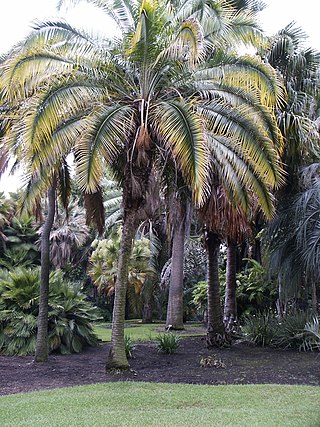
Phoenix rupicola or cliff date palm is a species of flowering plant in the palm family, native to the mountainous forests of India and Bhutan from 300 to 1200 m, usually occurring on cliffs, hillsides and similar terrain. It is threatened by habitat loss in its native range. On the other hand, the species is reportedly naturalised in the Andaman Islands, the Leeward Islands, Cuba and Puerto Rico and a specimen has recently been reported in Saint Lucia.

The Andean flicker is a species of bird in subfamily Picinae of the woodpecker family Picidae. It is found in Argentina, Bolivia, Chile, Ecuador, and Peru.
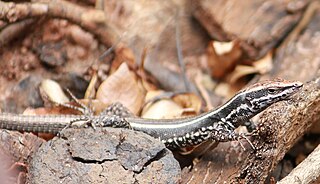
The Soutpansberg rock lizard is a small (40–50 mm) flattened species of lizard in the family Lacertidae. It has been described as a diurnal, rock-dwelling species inhabiting scree and rocky outcrops at altitudes from 900 to 1600 m. It is endemic to the Limpopo Province in the north of South Africa.
Gentianella rupicola is a species of plant in the family Gentianaceae. It is endemic to Ecuador. Its natural habitat is subtropical or tropical high-altitude grassland.
Peperomia rupicola is a species of plant in the family Piperaceae. It is endemic to Ecuador.

Hedlundia arranensis, sometimes referred to as the Scottish or Arran whitebeam, is a species of plant in the family Rosaceae. It is endemic to the island of Arran in Scotland.
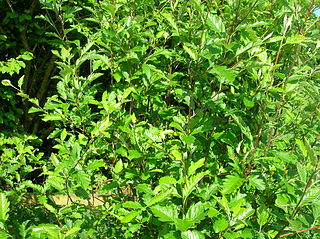
Hedlundia pseudofennica, also called Arran service-tree or Arran cut-leaved whitebeam, is a species of plant in the family Rosaceae. Endemic to the Isle of Arran in Scotland, it is threatened by habitat loss. It is thought to be a naturally occurring hybrid between H. arranensis and Sorbus aucuparia, probably with additional backcrossing with S. aucuparia. Hedlundia arranensis is itself a hybrid between Aria rupicola and S. aucuparia. Apomixis and hybridization are common in some groups of Sorbus species.
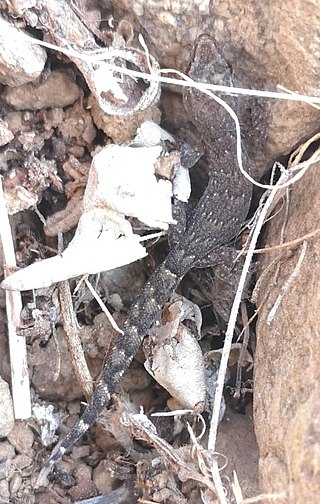
The Chilean marked gecko is a species of lizard in the family Phyllodactylidae. The species is endemic to Chile, in the Chilean matorral ecoregion. There are three recognized subspecies.
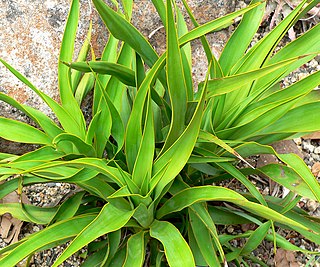
Yucca rupicola is a plant in the family Asparagaceae, known as the twistleaf yucca, twisted-leaf yucca, Texas yucca or twisted-leaf Spanish-dagger. The species was described by George Heinrich Adolf Scheele in 1850. This is a small, acaulescent plant with distinctive twisted leaves. It is native to the Edwards Plateau region of Texas and also to northeastern Mexico.

Homonota fasciata, also known as the South American marked gecko, is a nocturnal species of gecko. It lives in Bolivia, and in Argentina. It is found in tropical deciduous forest and desert scrub habitats. It feeds on insects.
Borelli's marked gecko is a species of gecko in the family Phyllodactylidae. The species is endemic to South America.
Homonota taragui is a species of gecko. It is endemic to Argentina.
Homonota underwoodi is a species of gecko, a lizard in the family Phyllodactylidae. The species is endemic to Argentina.
The Argentine marked gecko is a species of lizard in the family Phyllodactylidae. The species is endemic to Argentina.

Streptocarpus ionanthus is a species of Streptocarpus in the section Saintpaulia, commonly known as an African violet. It is native to eastern and southwestern Tanzania.













